Everything’s coming up roses…or moss…or succulents. Some intrepid independent jewelers are sprucing up their showrooms with botanically inspired decor, filling planters, windows, and even walls with lush greenery.
Best of all: You don’t need a green thumb to make this verdant trend work for you.
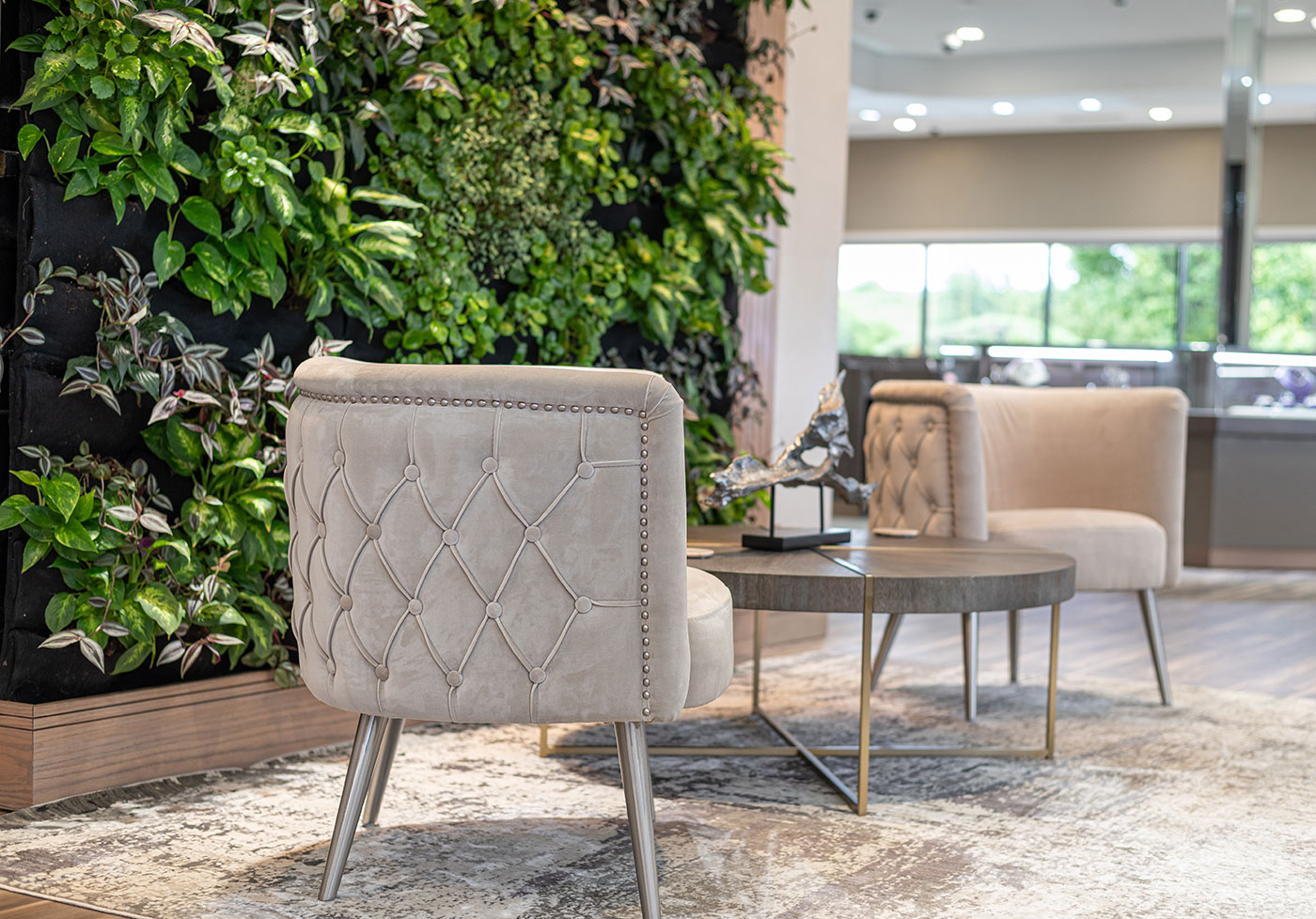
Michael Fleck, owner of Occasions Fine Jewelry in Midland, Texas, says a green wall was one of the first design elements he chose when remodeling the store in 2021. “Everything sort of sprouted from that,” he says (pun not intended). “We have a prairie desert around Midland, and my main idea for my showroom was I wanted to show off that prairie desert view.”
Working with Leslie McGwire, owner of Leslie McGwire & Associates Interior Design, Fleck decided on a desert color palette of earth tones to complement the green wall. Customers often assume the plants are fake, he says, and are “amazed” when they find out they’re all real. An irrigation system connected to the building’s water lines spritzes the individual plant containers automatically. Once a week, a local landscaper comes in to trim and prune the greenery, and replace sickly plants as needed.
Academic researchers in environmental science have found that plants improve people’s moods and stress levels. This finding carries through into the customer experience, with shoppers more willing to linger in retail settings where plants are present.
“When you have plants in a shopping area, it does give positive emotions, and the experience will translate, hopefully, to receptiveness and an increase in sales,” McGwire says. Plants in a jewelry store make people more comfortable, she adds. “The environment they’re shopping in is more of a relaxed environment instead of so formal.”
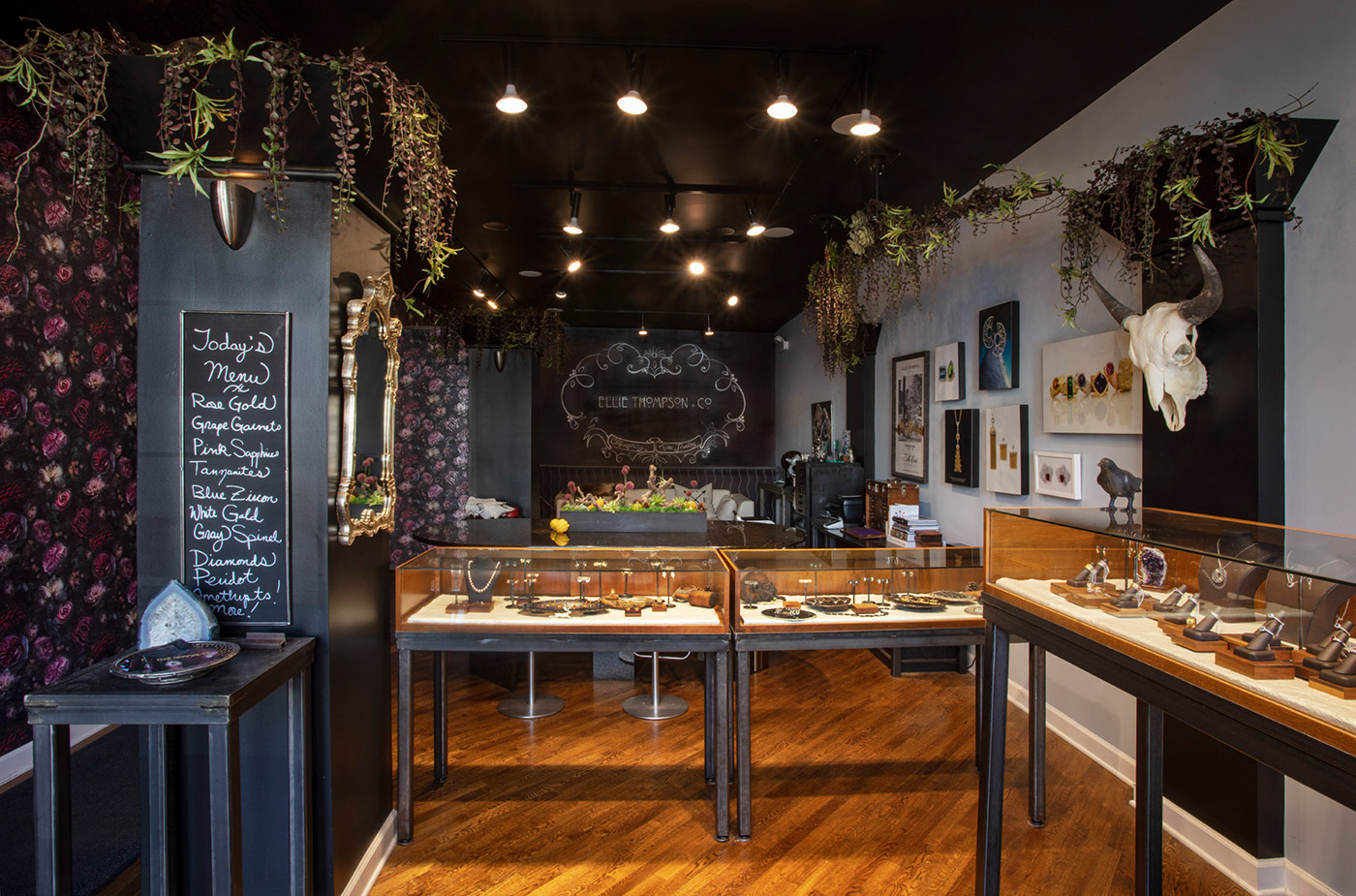
Ellie Thompson, designer and owner of an eponymous store in Chicago, says she thinks of greenery as “an interior landscape.” Thompson’s jewelry store is on the street level, but her window is set back from the sidewalk to accommodate a small urban garden.
In need of a window display that would be striking even at a distance, Thompson combined amethyst geodes and other minerals with lush orchids for a colorful tableau. “And then I just kept adding, bringing it further and further into the store.” Now her shop evokes a Victorian greenhouse vibe with lush ferns spilling over support beams, bold rose wallpaper, and jewel-toned accents. The store design complements the pieces she sells. “I have a lot of architectural designs and rich gemstone colors,” she explains.
For a more understated green theme, moss is a popular option. Wendy Woldenberg, owner of Wend Jewelry in Seattle, uses real and artificial moss to bring the outside in, including a striking vertical display of moss rings near the store’s entrance. Moss also adorns her window displays and even some showcases.
Shoppers love the way her store looks, Woldenberg says. Some have even asked if they could buy the vertical display. “People tell me it’s something just kind of calming and peaceful,” she says. “I’ve gotten a few people who say they don’t generally feel comfortable in jewelry stores, but they feel comfortable here, maybe because of the earthiness of it.”
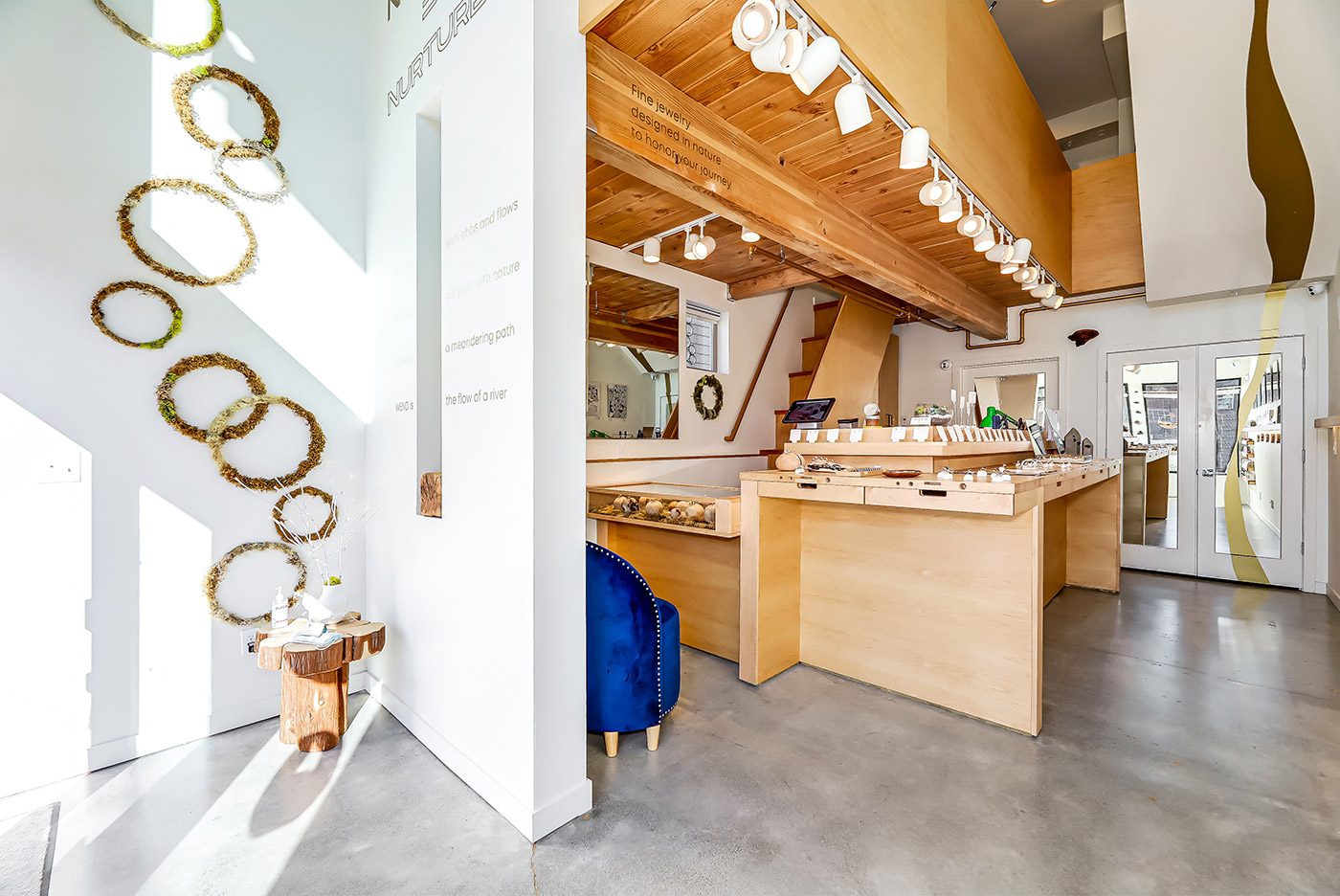
Creating a Plant Plan for Your Layout
While Fleck based much of his store’s redesign around the presence of the green wall, it’s certainly possible to add plants to an existing decor scheme, says Lyn Falk, owner of branding, design, and display firm Retailworks in Milwaukee.
It’s important to make sure that plants don’t overpower the space, but aren’t so small that they get lost. “We look at ceiling height, case and countertop heights, and see where there’s breathing space,” Falk says.
“There has to be intention—I’m always looking at layout and focal points,” Fleck says.
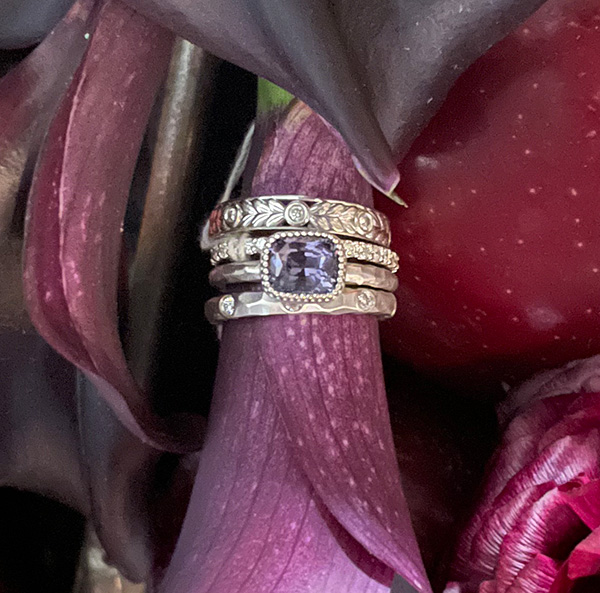
If you’re adding plants as part of a broader remodel, McGwire suggests considering colors and textures that will complement greenery, like wood and stone. If that’s not your style, plants also can stand out when incorporated as a contrasting element.
For Pearce Jewelers in Lebanon, N.H., McGwire designed a velvety moss wall that was then overlaid with a vibrant neon sign. “It’s very eye-catching,” she says.
Along with moss, succulents are a popular way to add greenery to a retail space. Randy Mitchum, owner of Mitchum Jewelers in Ozark, Mo., installed custom-built planters during his store’s expansion several years ago. Filled with artificial succulents, five individual planted zones lend a colorful vibrance to the space. “It just freshened things up,” he says.
Greenery also serves as a terrific prop or backdrop for marketing, retailers say. “Sometimes we’ll stage a piece of jewelry on top of [the planters] just to add some color,” Mitchum says. “If we’re doing a photo shoot or a TV commercial, we always stage it and angle the cameras so the greenery is in the background.”
At his Midland, Texas, store, “the green wall is the focal point of the store,” Fleck says, noting that applies to social media as well as in-store customer events. A small sitting area directly in front of the green wall gives the feature even more emphasis.
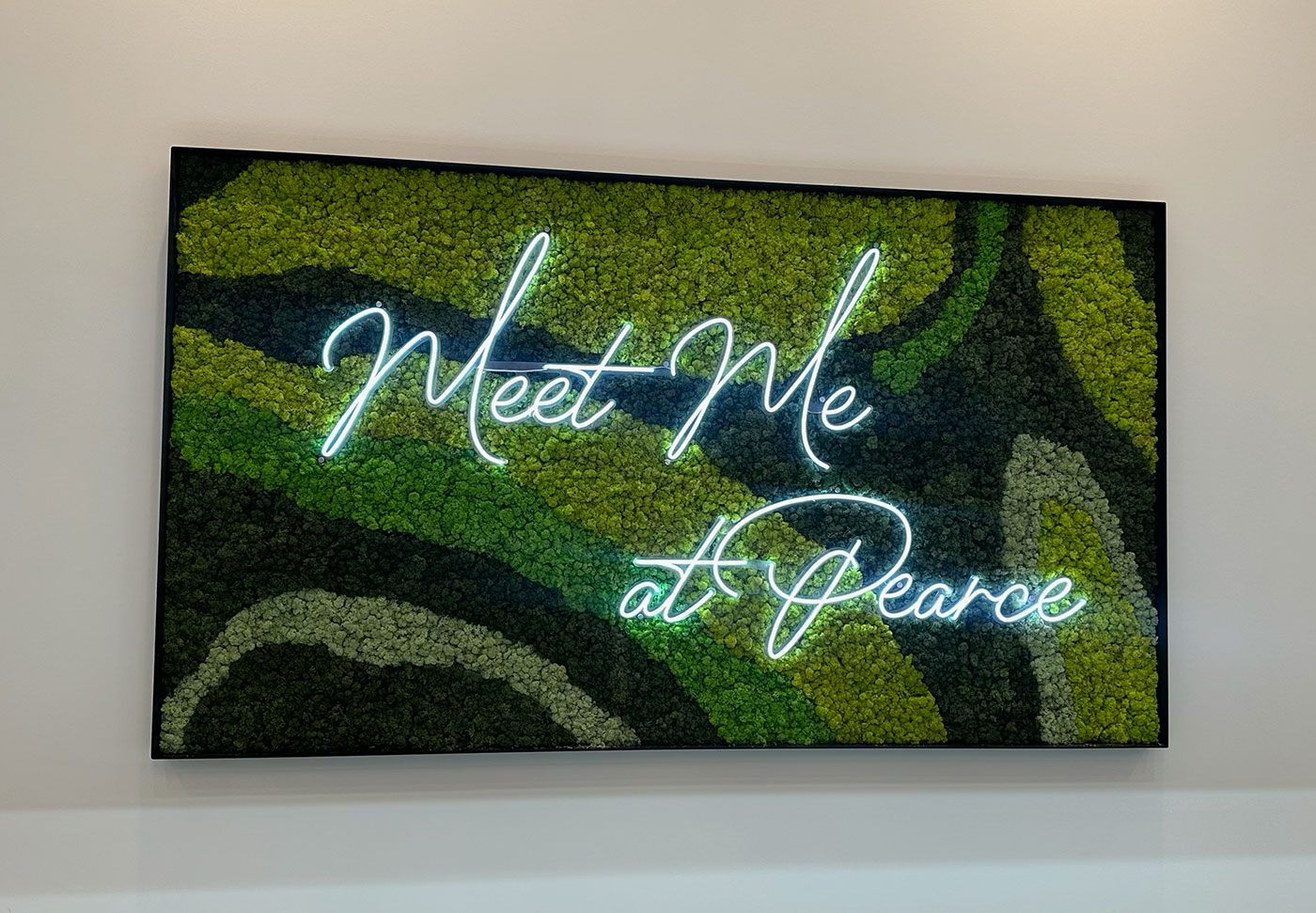
Tips From the Experts
If you’re thinking about adding plants to your showroom, design experts and retailers suggest you keep these considerations in mind.
• Growing conditions: While many types of plants can thrive indoors, you’ll need to choose ones compatible with the light, temperature, and humidity of your showroom. Generally, plants that require full sun or high humidity are less likely to thrive in a typical store environment.
Experts say it’s especially important to make sure that tropical plants inside stores in cold climates are situated away from the front door to avoid blasts of winter air.
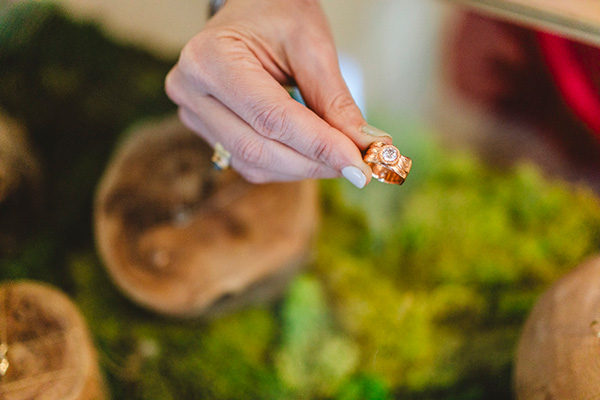
• Maintenance costs: Live plants need to be watered and pruned regularly, and switched out for new ones when they die. Some owners handle this themselves, while others contract with a local nursery or indoor landscaping company (costs vary depending on the location and frequency of visits).
For retailers looking for a low-maintenance way to incorporate plants into their showroom design, McGwire suggests succulents or air plants, which require little watering.
• When (and how) to fake it: As Kermit the Frog says, it’s not easy being green. Keeping plants lush and healthy can be a challenge. Not all stores have the appropriate growing conditions, and not all owners want to commit the time or money to cultivating live plants.
Some stores use a mix of natural and artificial plants. Thompson has a collection of live orchids she rotates in and out of her in-store display, along with some artificial ones so she can keep her windows filled with floral cheer even when her live orchids are between blooming cycles.
If you haven’t looked at artificial plants recently, they’ve come a long way from the dusty silk flowers of earlier generations, McGwire says. “Long ago, the silk plants were ugly, plastic—just nasty-looking. In today’s world, you can’t even tell the difference, even when you’re touching it.”
Top: Rose Gold Hydrangea Wired Earrings ($1,500) at Ellie Thompson play off the store’s outdoorsy display.
